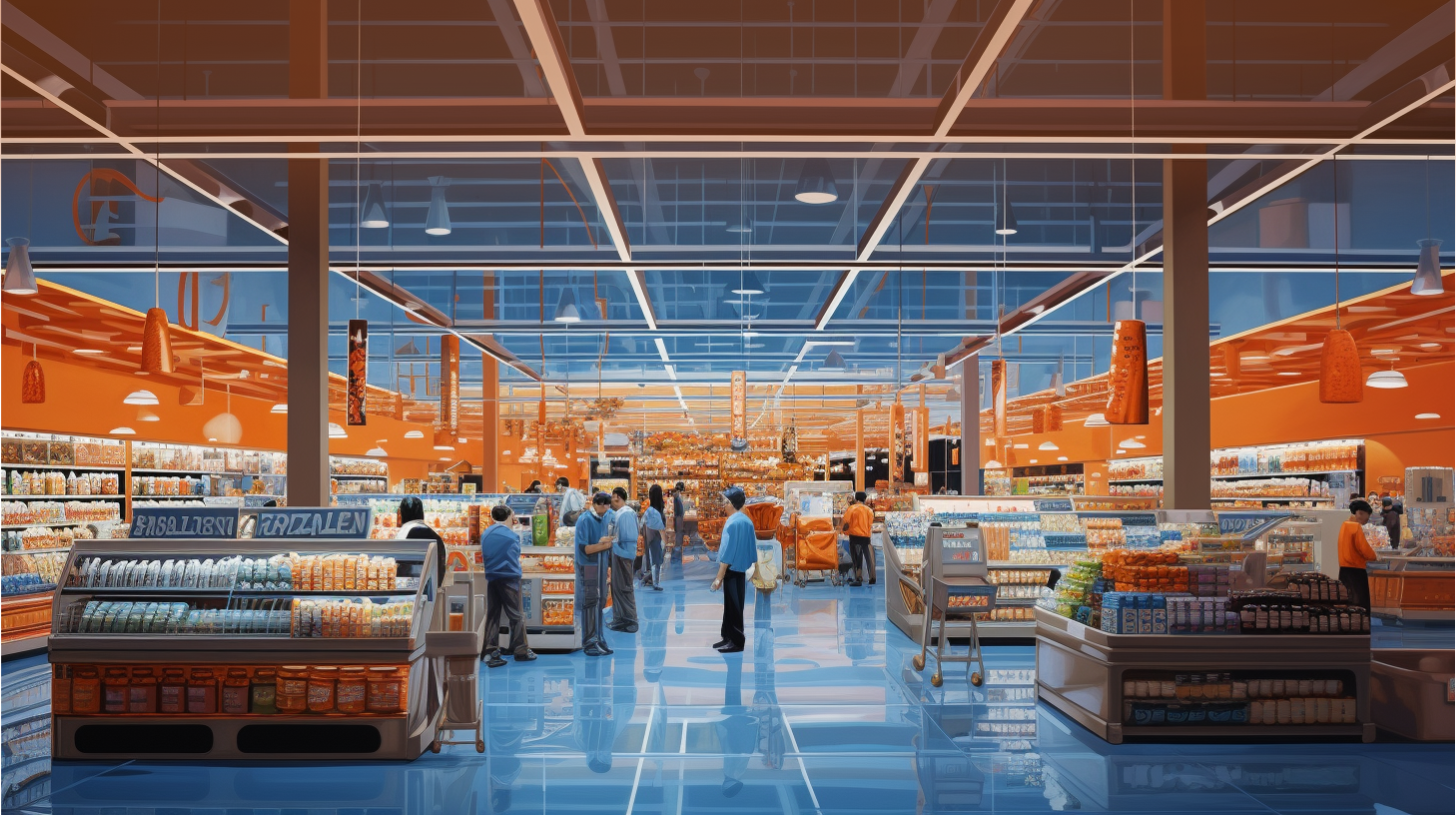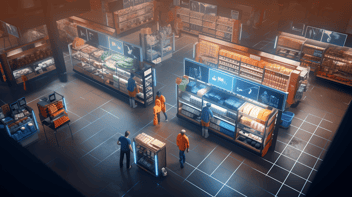Do you ever wonder how many merchandising decisions you’re making based on long-held, but unproven, assumptions? Here are a few:“High-traffic areas guarantee high conversions” or “Bigger displays mean bigger results.” But what if these “best practices” are actually holding your brand back?
At VideoMining, we’ve analyzed hundreds of millions of in-store shopper journeys and uncovered a truth that might surprise you: Retail success isn’t always about chasing the big fish —it’s about strategic precision. Let’s dismantle three merchandising myths that are steering you wrong, and identify how to use Shopper Behavior Analytics to drive demand.
Myth #1: High Traffic Zones Always Deliver High Sales
The Reality
While placing a display in a store’s busiest aisle or front end might seem like a no-brainer, our behavioral analytics reveal a counterintuitive insight: high-traffic areas don’t always yield the highest engagement. Why? Shoppers in these zones are often on a mission—not stopping to browse. What’s more, the right formula for stopping shoppers in their tracks will vary greatly depending on the category you are inserting, what need state you’re trying to fill, and what behavior you’re looking to evoke. In truth, this one size fits all approach is one of the biggest hinderances of big-time merchandising success.
The Data-Backed Fix:
-
Step in Your Shoppers’ Shoes: Curated displays evoke emotions and intrigue, which starts by meeting the shopper where they are in their shopping journey. Retail Display Optimization is about precision; VideoMining’s Behavior Benchmark™ Reports offer category-specific best practices for Display optimization, rooted in a collective analysis of over 100 million real shopper experiences and interactions with displays. With precise heat maps and target zone analysis, you’ll understand exactly where in the journey your target audience is most likely to engage, and what message they’ll be most open to.
Myth #2: Bigger Displays Are Better Displays
The Reality
Size matters, but not in the way you think. Oversized displays can overwhelm shoppers, bury your product in clutter, or even block aisle navigation—reducing conversions.
The Data-Backed Fix:
-
Focus on Relevance, Not Size: Compact, well-targeted displays can often outperform larger ones. The key is to be intentional - not only with each design element, but with the assortment of brands, categories, and SKUs you cram onto the display itself. VideoMining’s Behavior Test™ programs allow for scalable real-life scenario testing - giving you the concrete proof you need to drive better decision making across the board.
Want More Insights in Action? Check out how Hershey leveraged Shopper Behavior Analytics to revolutionize its convenience store merchandising strategy.
Myth #3: Displays Should Always Chase Impulse Purchases
The Reality
While impulse buys are important, the most impactful displays do more—they drive incremental retail traffic to underperforming categories and boost overall basket size.
The Data-Backed Fix:
-
Design “Bridge Displays”: Use cross-category promotions to guide shoppers to adjacent aisles. For instance, a cereal brand placed a display with breakfast bars near the coffee aisle, leading to a double-digit increase in retail traffic and higher cross-category sales. This approach aligns with In-Store Engagement Strategies, where you leverage Retail Display Optimization and location to create deeper engagement.
-
Measure Incremental Impact: Instead of just tracking display sales, analyze how your display influenced broader shopping behavior. For example, shoppers might not buy directly off a warm beer display, but were more shoppers inspired to make a u-turn and visit the cold beer aisle based on the display they saw?
The Root Cause of Merchandising Failures: Flying Blind
Most campaigns fail because marketers rely on intuition or surface-level metrics (e.g., foot retail traffic). Without Behavioral Shopper Insights, you’re missing the big picture:
-
Which shoppers actually stop?
-
How did the shopper journey change based on your display placement?
-
How long do they engage?
-
What triggers a purchase?
-
What trip missions did we most successfully infiltrate?
VideoMining’s AI-powered behavioral insights platform cuts through the noise by analyzing real actions in real stores, removing the uncertainty and shedding light on retail traffic myths.
3 Steps to Smarter Merchandising
-
Test Before You Invest: Use VideoMining’s Behavior Tests™ to pilot displays in select stores and measure true shopper response.
-
Optimize for Engagement, Not Just Exposure: Target zones where shoppers pause, explore, and decide.
-
Track Incremental Gains: Look beyond immediate sales—measure how displays lift category exploration and loyalty.
The Future of Merchandising Is Precision, Not Guesswork
Retail’s winners aren’t those with the biggest budgets—they’re the brands that deploy displays with surgical accuracy. By embracing behavioral insights, you can:
- Reduce costly trial-and-error through scalable testing and learning.
- Boost display ROI with hyper-targeted placements.
- Turn underperforming zones into profit centers.
Ready to Rethink Your Merchandising Playbook? Let’s optimize your next campaign—together.






.png?width=352&name=We%20Are%20(1).png)
